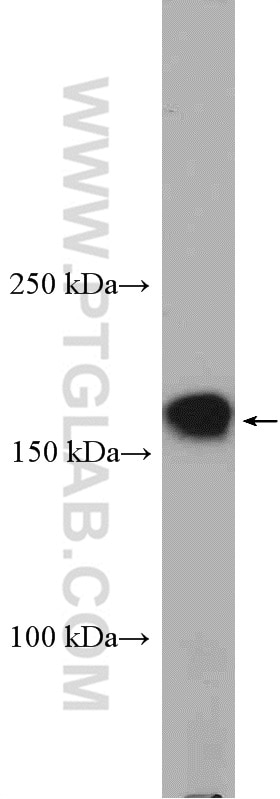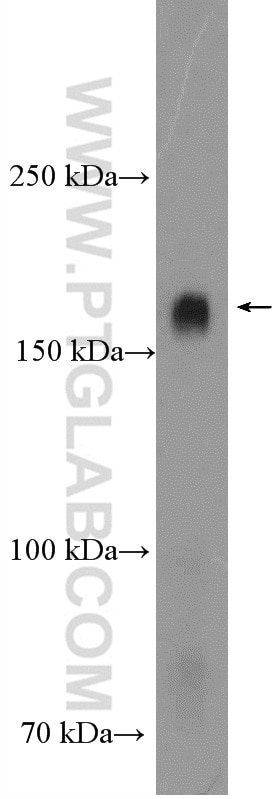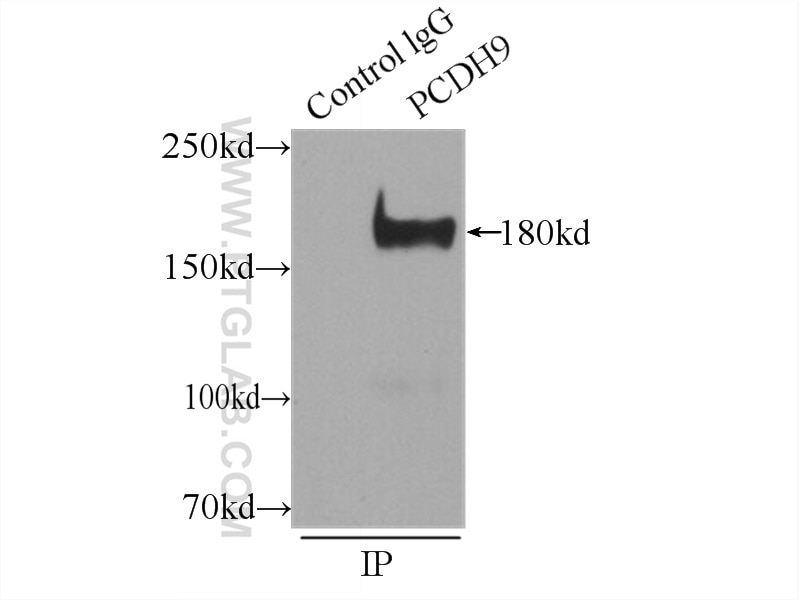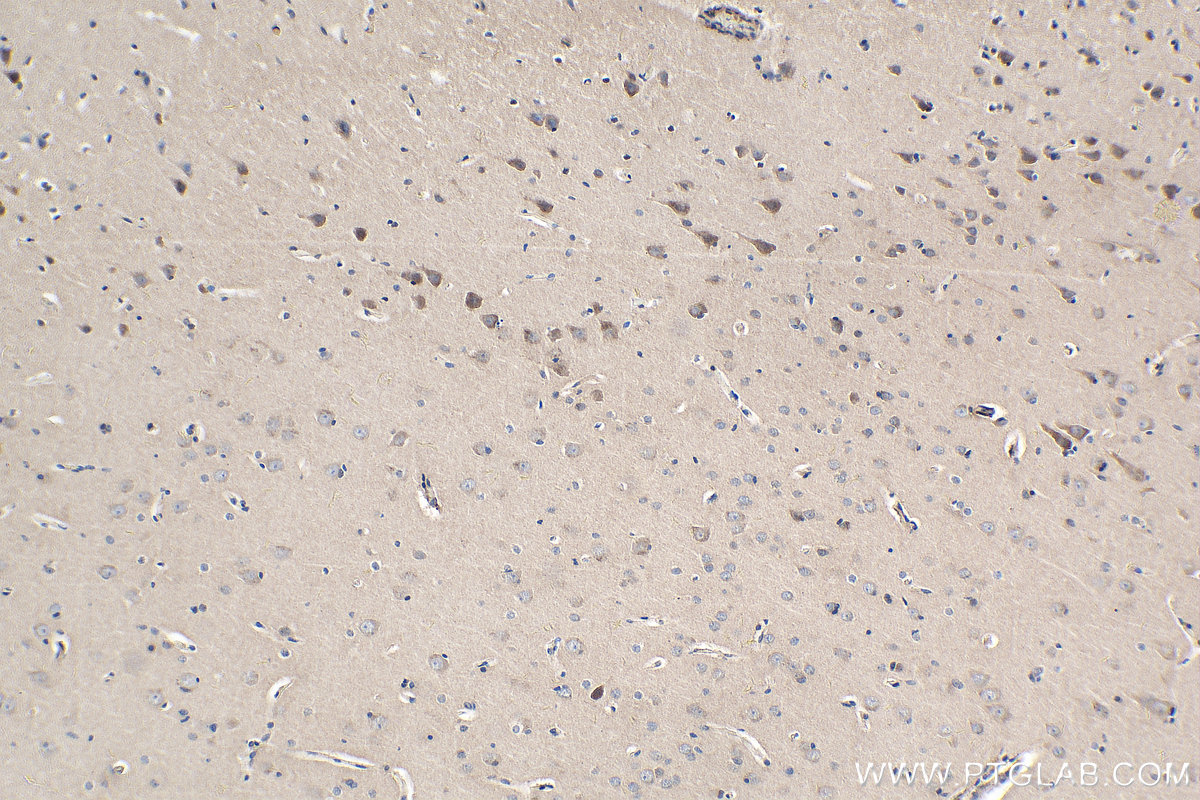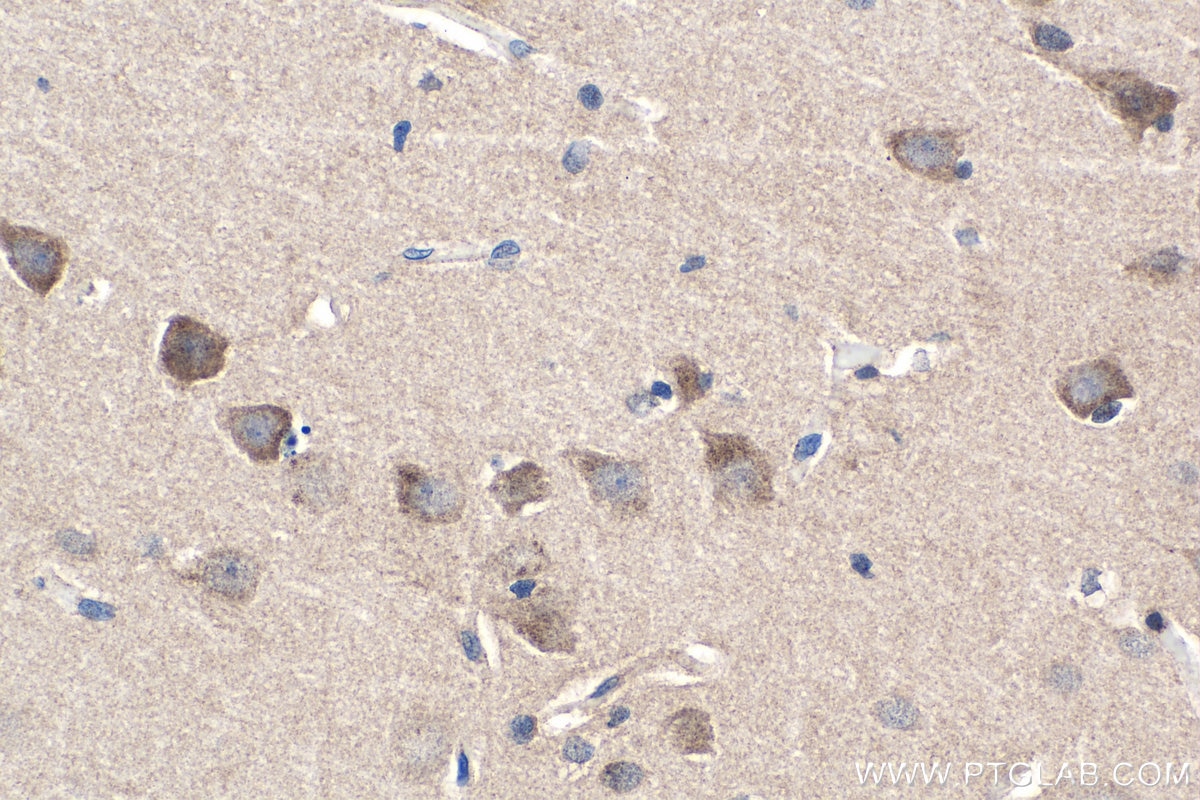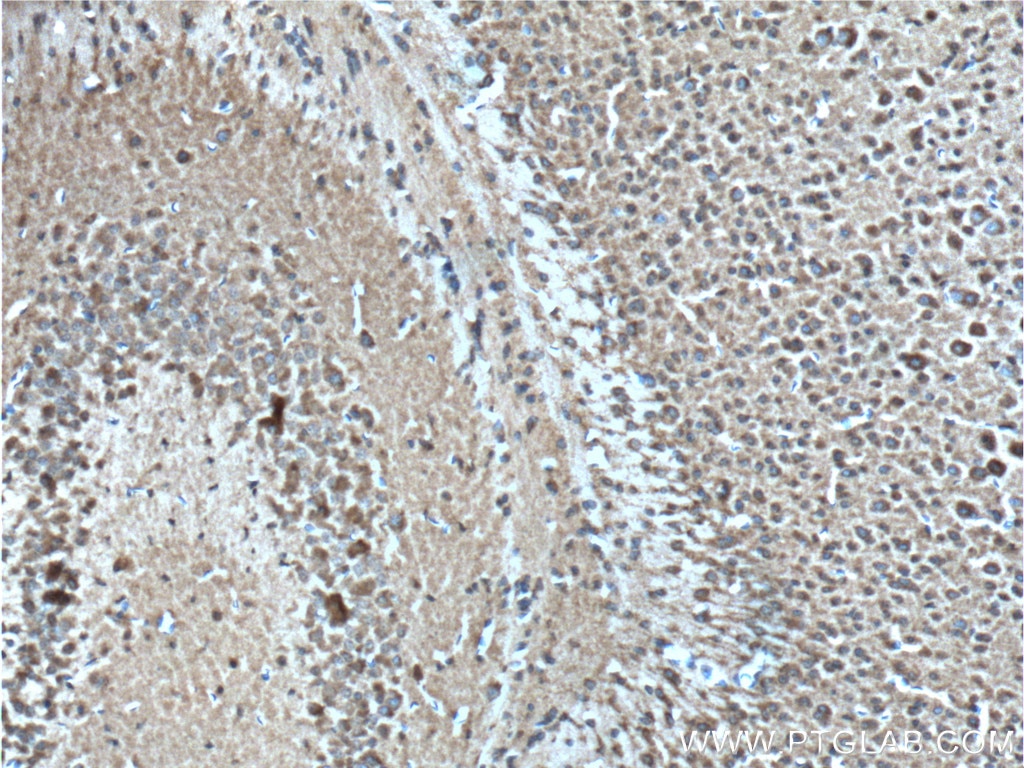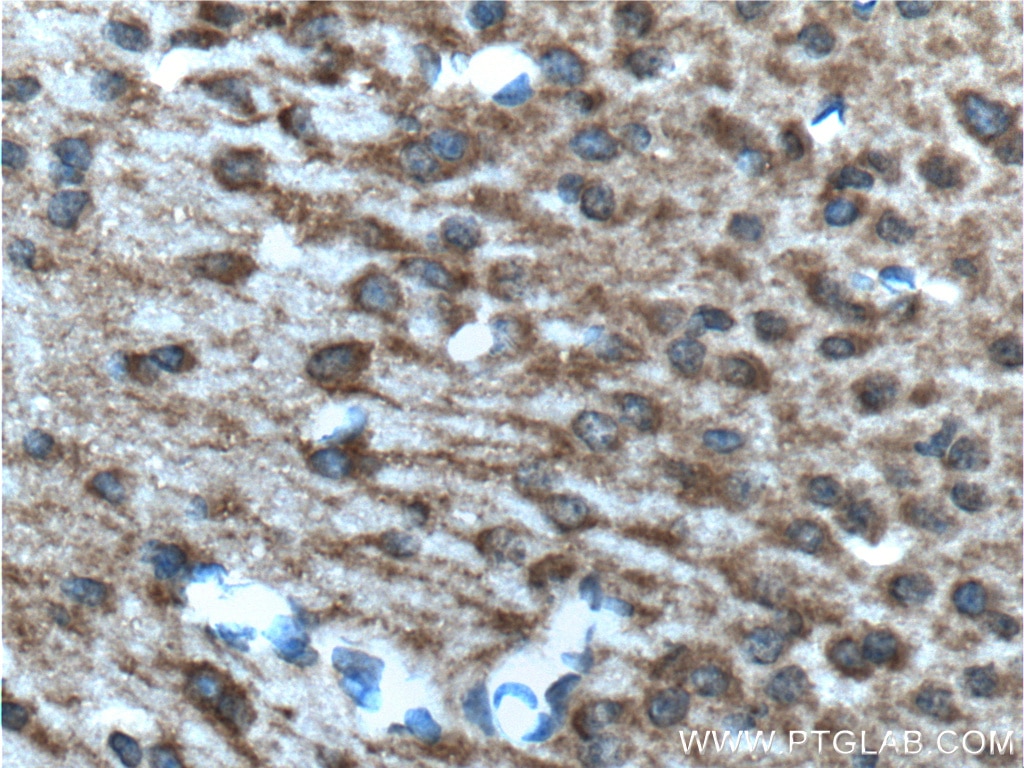Validation Data Gallery
Tested Applications
| Positive WB detected in | mouse brain tissue, rat brain tissue |
| Positive IP detected in | mouse brain tissue |
| Positive IHC detected in | human gliomas tissue, mouse brain tissue Note: suggested antigen retrieval with TE buffer pH 9.0; (*) Alternatively, antigen retrieval may be performed with citrate buffer pH 6.0 |
Recommended dilution
| Application | Dilution |
|---|---|
| Western Blot (WB) | WB : 1:500-1:1000 |
| Immunoprecipitation (IP) | IP : 0.5-4.0 ug for 1.0-3.0 mg of total protein lysate |
| Immunohistochemistry (IHC) | IHC : 1:250-1:1000 |
| It is recommended that this reagent should be titrated in each testing system to obtain optimal results. | |
| Sample-dependent, Check data in validation data gallery. | |
Published Applications
| WB | See 3 publications below |
| IF | See 1 publications below |
Product Information
25090-1-AP targets PCDH9 in WB, IHC, IF, IP, ELISA applications and shows reactivity with human, mouse, rat samples.
| Tested Reactivity | human, mouse, rat |
| Cited Reactivity | human, mouse |
| Host / Isotype | Rabbit / IgG |
| Class | Polyclonal |
| Type | Antibody |
| Immunogen | PCDH9 fusion protein Ag18696 相同性解析による交差性が予測される生物種 |
| Full Name | protocadherin 9 |
| Calculated molecular weight | 1237 aa, 136 kDa |
| Observed molecular weight | 150-180 kDa |
| GenBank accession number | BC136626 |
| Gene Symbol | PCDH9 |
| Gene ID (NCBI) | 5101 |
| RRID | AB_2879891 |
| Conjugate | Unconjugated |
| Form | Liquid |
| Purification Method | Antigen affinity purification |
| UNIPROT ID | Q9HC56 |
| Storage Buffer | PBS with 0.02% sodium azide and 50% glycerol , pH 7.3 |
| Storage Conditions | Store at -20°C. Stable for one year after shipment. Aliquoting is unnecessary for -20oC storage. |
Background Information
Protocadherin-9 (PCDH9) is a member of the protocadherin family that belongs to the cadherin superfamily. Protocadherins are calcium-dependent adhesion proteins and have been implicated in neural cell-cell interactions. They are abundantly expressed in the central nervous system during embryonic development and in adulthood (PMID: 24214103). PCDH9 is a single-pass type I membrane protein that contains seven cadherin motifs in its extracellular domain. It might be involved in the formation of specific neural circuits during neural development (PMID: 22982106).
What is the molecular weight of PCDH9?
The calculated molecular weight of PCDH9 is 136 kDa.
What are the isoforms of PCDH9?
Alternatively spliced transcript variants encoding distinct isoforms have been identified for the PCDH9 gene; a short transcript, a standard transcript, a transcript with additional exon 2, and another transcript with variant exon 3 (PMID: 15095963).
What is PCDH9's involvement in neural development?
The family of protocadherins is essential for neural development as mutations in these proteins give rise to neurodevelopmental disorders such as schizophrenia and epilepsy. However, the exact mechanisms of loss of function and the role of PCDH9 remain to be fully characterized (PMID: 22982106).
Protocols
| Product Specific Protocols | |
|---|---|
| WB protocol for PCDH9 antibody 25090-1-AP | Download protocol |
| IHC protocol for PCDH9 antibody 25090-1-AP | Download protocol |
| IP protocol for PCDH9 antibody 25090-1-AP | Download protocol |
| Standard Protocols | |
|---|---|
| Click here to view our Standard Protocols |
Publications
| Species | Application | Title |
|---|---|---|
Neuron Longitudinal single-cell transcriptional dynamics throughout neurodegeneration in SCA1 | ||
Onco Targets Ther MiR-200a-3p promoted the malignant behaviors of ovarian cancer cells through regulating PCDH9. | ||
Genes (Basel) Expression of Congenital Anomalies of the Kidney and Urinary Tract (CAKUT) Candidate Genes EDA2R, PCDH9, and TRAF7 in Normal Human Kidney Development and CAKUT | ||
Breast Cancer (Dove Med Press) Unraveling the Role of PCDH9 in Breast Cancer and Identifying Therapeutic Strategies for PCDH9-Deficient Tumors |
